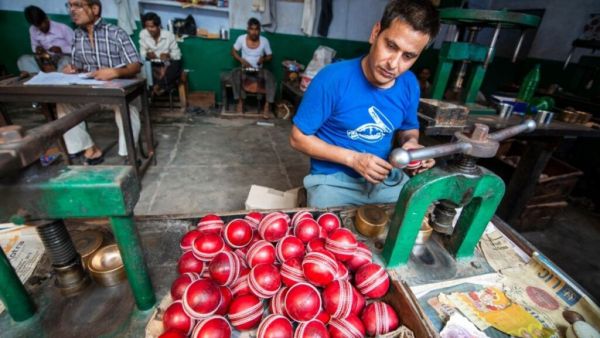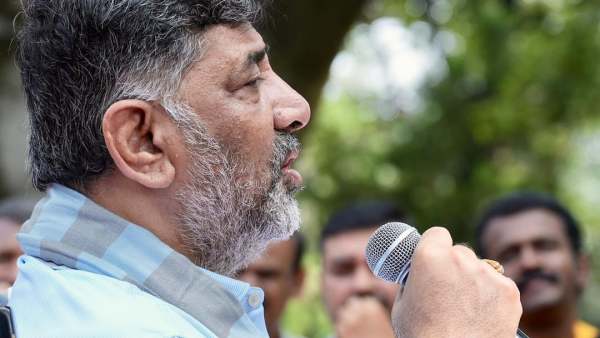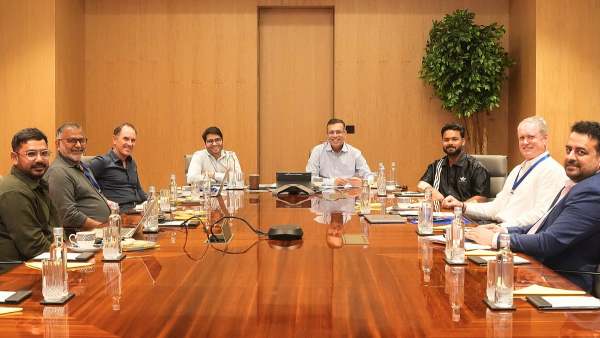
When Prime Minister Narendra Modi inaugurated the Uttar Pradesh International Trade Show in September 2025, his remarks went beyond ceremonial optimism. He reaffirmed India’s vision of making everything “from chips to ships,” celebrated the structural GST reforms rolled out just days earlier, and highlighted the transformative potential of digital platforms like UPI, GeM, and ONDC in democratising opportunities for MSMEs and startups.
In short, PM Modi underscored Ease of Doing Business (EoDB) as not merely a technocratic scorecard, but central to India’s growth story.
The PM’s address also highlighted tangible reform milestones: over 40,000 compliances eliminated and hundreds of rules decriminalised to reduce litigation over minor business errors.
Viewed alongside the Business Reforms Action Plan (BRAP) 2024 cycle, these achievements indicate that the policy architecture is evolving in the right direction. Yet, experience from the ground suggests that the real challenge lies not in creating frameworks, but in delivering them consistently so that businesses can rely upon them.
From policy wins to ground reality
India has made substantial progress in institutionalising business reforms. The BRAP 2024 cycle, for example, provides a detailed, state-specific roadmap for simplifying procedures, digitising approvals, and enforcing timelines. Central initiatives, e.g., GST, decriminalisation of petty offences, and the rollout of digital platforms like UPI, GeM, and ONDC, have laid a foundation for more transparent and predictable business processes.
However, policy intent does not always translate into tangible outcomes. The critical question for India’s policymakers is whether these frameworks improve the everyday experience of businesses, particularly Micro, Small, and Medium Enterprises (MSMEs), which collectively contribute around 30 per cent of India’s GDP, 35 per cent of Manufacturing GVA, and over 45 per cent of exports. Without reliable delivery mechanisms, even the most well-designed reforms risk remaining aspirational.
The implementation gap: Last-mile delivery
Policy announcements are only as effective as their execution.
The so-called “last mile” of EoDB: ensuring that regulations are applied consistently at state and district levels, remains a persistent challenge.
Variability in digital adoption: Single Window Systems (SWS) have been mandated to streamline approvals, but adoption and effectiveness vary widely across states. Karnataka and Gujarat lead with fully digitised SWS portals that integrate departmental approvals, offer real-time tracking, e-payments, and reduce the need for physical visits. In contrast, states such as Bihar and Assam struggle to unify approvals, forcing users to navigate multiple departmental sites or submit documents manually. Even the National SWS, while functional for company incorporations, is not entirely paperless. Periodic manual verification and office visits remain common due to agency reluctance or legacy record-keeping practices (CII EoDB Watch 2025).
Bureaucratic resistance: Legal reforms, including decriminalisation of minor business errors, represent a step forward, but implementation can lag behind. For instance, the founder of AI startup NimbleEdge recounted how raising funds via the Overseas Direct Investment route became a seven-month ordeal, costing over $100,000 in lost opportunities due to incomplete paperwork, according to Financial Express. Similarly, Wintrac Inc’s recent exit from India, citing sustained bribery demands and harassment by Chennai Customs, underscores the persistent barriers to ease of doing business arising from red tape and corruption, as per a Bussiness report. This highlights that decriminalisation without standard operating procedures, timelines, and inter-departmental awareness risks being reduced to rhetoric.
MSME compliance burden: For MSMEs, the gap between law and practice is felt most acutely. A June 2025 TeamLease RegTech survey of manufacturing MSMEs finds that an average firm must navigate over 1,450 regulatory obligations annually, spread across seven branches of law. Compliance costs now average Rs 13–17 lakh per year per enterprise, a substantial burden for small firms. Key structural challenges for MSMEs include maintaining 48 separate registers; dealing with up to 59 inspectors, and navigating 486 penal clauses, many of which pertain to minor procedural lapses, with labour laws accounting for roughly two-thirds of these legal risks. The cumulative effect is a constant diversion of entrepreneurial energy from innovation to paperwork, risk management, and navigating systemic inefficiencies. Transaction costs inflate, factory setups are delayed, and competitiveness erodes, constraining MSMEs’ ability to scale.
Lessons for the next phase of reform
To advance EoDB meaningfully, India must shift the focus from law change to tangible outcomes. While BRAP provides granular procedural guidance, compliance is often measured through screenshots and notifications rather than real business impact. The next reform phase should link achievements to firm-level outcomes: permitting turnaround times, days to obtain power for operational units, and the share of licence renewals completed fully online.
Targeted digitalisation: Digitalisation must move beyond superficial portals. E.g., Chhattisgarh’s One-Click SWS 2.0 integrates applications, clearances, subsidies, and real-time approvals, making digital approvals legally binding. Karnataka covers 150+ services across 30 departments, with clear timelines and auto-escalation for delays. Conversely, many states treat portals as intake-only, still requiring physical NOCs, undermining the promise of digitalisation and burdening MSMEs with partial manual compliance.
State-specific solutions: Reforms must be tailored to local realities, since India’s states vary widely in industrial structure, geography, capital intensity, and institutional capacity. A one-size-fits-all approach often fails: Kerala and Gujarat may lead BRAP rankings, but their models may not translate well to land-locked, agrarian, high-poverty states. Instead, BRAP action items should be translated into state/ cluster-specific KPIs. E.g., textile clusters could be assessed by the time taken to issue power and trade licences (e.g., Tiruppur in Tamil Nadu), agriculture-linked SME belts by inspection waiver and green clearance renewal timelines (e.g., food-processing hubs in Madhya Pradesh and Maharashtra), and hinterland manufacturing zones by average bank credit lead times for micro firms (e.g., auto-component MSMEs in Haryana or small engineering clusters in Chhattisgarh). Pilot examples illustrate potential gains. In Madhya Pradesh’s tribal districts, the PM Gati Shakti framework reduced inspection frequency for agro-processing units by 30 per cent, cutting compliance costs and freeing managerial time.
Strengthening institutional capacity: Even states that score highly on reform metrics continue to face complaints of inconsistent inspections, opaque adjudication, and slow grievance redressal. Addressing these challenges requires strengthening managerial capacity through measures such as inspector training, digitised case-tracking with clear service-level agreements, independent audits, and publicly available complaint-to-closure timelines. Without these interventions, procedural reforms risk remaining symbolic rather than delivering truly transformative outcomes.
Towards a seamless business ecosystem
The policy framework today is markedly stronger than five years ago: BRAP 2024 provides detailed guidance, redundant compliance is being removed, and political will exists to decriminalise minor errors. Yet, the ultimate test lies in execution. The measure of success will be whether a young entrepreneur in a Tier-2 city can start and grow her business without navigating opaque approvals, unpredictable delays, or disproportionate penalties.
Converting reforms from plans and notifications into tangible business ease is critical for unlocking MSME potential, scaling industrial clusters, and enhancing India’s global competitiveness. As India moves towards Viksit Bharat 2047, it is vital that the promise of Ease of Doing Business is not merely a headline, but a lived reality.
The authors are, respectively, Executive Director, and Senior Fellow, Pahle India Foundation.
The opinions expressed in this article are those of the author and do not purport to reflect the opinions or views of THE WEEK.
-
Shubman Gill Hints Mohammed Shami May Not Be Part Of India's Future

-
How Patanjali Is Promoting Indian Culture And Traditions Across The World Through Its Products? Know Here

-
SC Dismisses Tamil Nadu Plea On Mekedatu; Shivakumar Calls It ‘Justice Delivered’

-
'His Biggest Challenge Will Be...': Cheteshwar Pujara Outlines Major Shubman Gill Challenge Ahead Of IND vs SA Tests

-
IPL 2026 Retention Deadline: Rishabh Pant Joins Sanjiv Goenka, Staff In Kolkata For LSG Retention Talk
